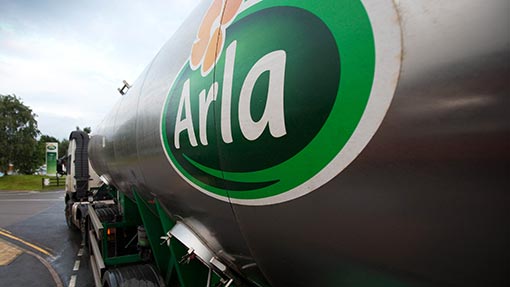Arla targets carbon footprint to raise efficiency
 © Tim Scrivener
© Tim Scrivener Arla has launched a sustainable dairy farming strategy to encourage its farmers to cut their carbon footprint, become more efficient and make more money.
The key target is to reduce the carbon footprint per kilogramme of milk from its members’ farms by 30% by 2020, compared with 1990 levels.
The industry has already made progress on this as part of the Dairy Roadmap, with greenhouse gas emissions from the UK dairy sector falling 26% between 1990 and 2010.
Arla is offering non-compulsory free workshops and carbon footprint assessments to its members, aimed at reducing wasted resources and improving farm management.
Between 2010 and 2013, 200 workshops and 900 voluntary carbon and energy assessments were carried out in the UK.
See also: Arla Food amba raises February milk prices
Those surveyed in all three years scored an 8% reduction in carbon footprint and an 11% drop in nitrogen use, while increasing production by 7%.
British Arla member John Cook said what he learned from the on-farm workshops had achieved financial and environmental benefits.
“I assumed the programme would be centred around energy and power reduction,” he said. “However, it became apparent that the most important way to reduce the carbon footprint of a dairy farm is to manage a herd of healthy cows, producing to their full potential.”
Arla has said there will be no extra demands on farmers above the animal welfare standards included in the mandatory Arlagarden assurance scheme, due to be rolled out to the UK in 2015.
The firm’s chief executive officer Peder Tuborgh said the co-operative business had taken a stand on animal welfare, climate change, sustainability and other environmental issues.
